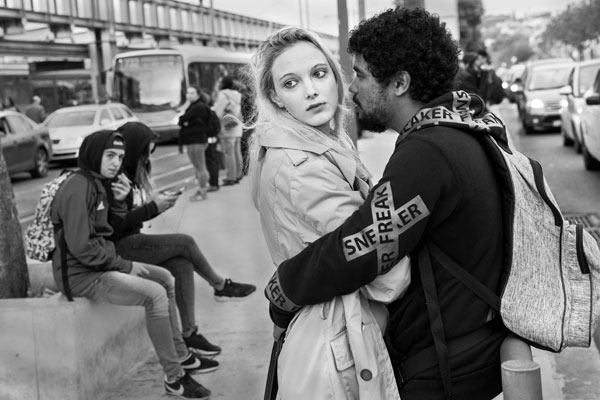The smart Trick of Framing Streets That Nobody is Talking About
The 5-Second Trick For Framing Streets
Table of ContentsA Biased View of Framing StreetsFraming Streets for DummiesThe 9-Minute Rule for Framing StreetsThe Main Principles Of Framing Streets

Both at the Gallery of Modern Art (Mo, MA). Motivated by Frank, in the 1960s Garry Winogrand, Lee Friedlander and Joel Meyerowitz began photographing on the streets of New york city. Phil Coomes, composing for BBC News in 2013, claimed "For those people thinking about street digital photography there are a few names that stand out and among those is Garry Winogrand"; critic Sean O'Hagan, writing in in 2014, said "In the 1960s and 70s, he specified road photography as a perspective along with a style and it has actually laboured in his shadow ever before since, so definitive are his photos of New York." Returning to the UK in 1965 from the United States where he had satisfied Winogrand and embraced street digital photography, Tony Ray-Jones transformed a wry eye on typically surreal collections of British people on their holidays or taking part in events.
Street digital photography is a vast category that can be specified in numerous means, but it is usually defined by the spontaneous recording of an unrepeatable, fleeting minute, often of the daily going-ons of unfamiliar people. It is classically fired with bigger angle lenses (e. g. 35mm) and normally features metropolitan settings.
All about Framing Streets
Documentary digital photographers typically have a defined, deliberate message and an intention to record particular events in history (https://myanimelist.net/profile/framingstreets1). The gamut of the documentary method incorporates facets of journalism, art, education, sociology and history. In social examination, docudrama images are commonly intended to prompt, or to highlight the demand for, societal change
Street digital photography is normally viewed as unposed and candid, however there are a few street professional photographers who engage with unfamiliar people on the streets and take their portraits. Street pictures are unplanned portraits taken of strangers while out doing road photography, however they are viewed as presented since there is interaction with the subject.
Photographing people and areas in public is legal in many nations securing flexibility of expression and journalistic freedom. There are usually restrictions on exactly how photos of individuals may be made use of and most countries have specific legislations pertaining to individuals's privacy.
The 20-Second Trick For Framing Streets
While the common-law districts follow the UK, with respect to the freedom to take pictures in a public location, Quebec law gives that, in the majority of scenarios, their publication can occur just with the consent of the subjects therein. The European Union's Civil rights Act 1998, which all EU countries have to promote in their domestic law, establishes in a right to privacy. The right to privacy is safeguarded by Write-up 8 of the convention. In the context of digital photography, it stands at odds to the Short article 10 Of liberty of expression. Thus, courts will usually think about the general public passion in stabilizing the rights through the legal test of symmetry. While likewise limiting photography in order to secure privacy legal rights, road digital photography can still be lawful in France when gone after as an art form under specific circumstances.

. that simply roamed into a scene), or who are not also recognizable in the photo. https://framing-streets.webflow.io/. It also does not usually extend to individuals that try this are public numbers (e. g - Lightroom presets. politicians or celebs). If an image is taken into consideration art, the courts will certainly also take into consideration the photographer's liberty of creative expression; implying that "artistic" street digital photography can still be legally released in certain cases
About Framing Streets
In Greece the right to take photographs and publish them or market licensing rights over them as art or editorial web content is safeguarded by the Constitution of Greece (Post 14 and various other write-ups) and complimentary speech regulations along with by instance law and legal cases. Photographing the cops and releasing the photographs is also legal.
In Hungary, from 15 March 2014 anyone taking photographs is technically breaking the legislation if someone wanders into shot, under a brand-new civil code that bans taking pictures without the approval of every person in the photo - photography presets. This expands the law on grant consist of the taking of photographs, in addition to their publication
'Covert photography' (kakushidori concealed, surreptitious photography) 'stolen photography' (nusumitori without intention of obtaining authorization) and "quick digital photography' (hayayori before consent and rejection can be provided) are restricted unless in the previous consent is acquired from the subject quickly after taking the picture. People have rights to their images (shzken, droit de picture).